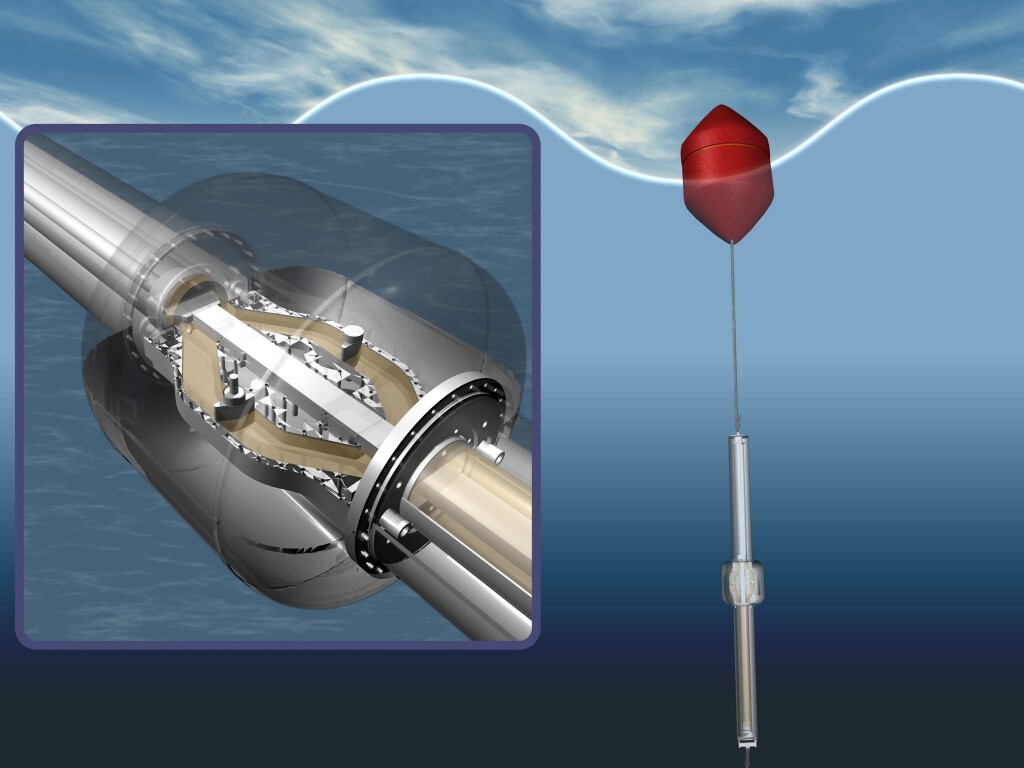Harnessing wave power can be a tricky business. It's one thing to build a device that simply moves up and down with the waves, but another to build one that's efficient enough to be cost-effective. Swedish company CorPower Ocean claims to have done just that, however. Its wave energy converter buoys reportedly generate five times more energy per ton of device, at a third the cost of other wave power systems.
The CorPower setup is what's known as a point absorber system. Here's how it works ...
A buoy floats on the surface of the ocean, moving up and down with the waves. That buoy is moored to the sea floor, although sitting on the line part way between the buoy and its anchor is the actual wave energy converter mechanism.

In some other point absorber systems, this consists of a hydraulic pump that generates electricity as it's pulled up and released by the buoy. In the CorPower system, however, there's a geared drivetrain, developed at Sweden's KTH Royal Institute of Technology. That drivetrain uses multiple small pinion wheels to convert linear motion into rotation, spinning up a flywheel.
Additionally, the drivetrain is said to enhance the buoy's movements, allowing it to rise and fall more while staying in sync with the rhythm of the waves. According to CorPower CEO Patrik Möller, this means that the system harnesses wave motion "all the way between the wave crest and wave trough and back in an optimal way, no matter how long or high the waves are."
Energy is temporarily stored onboard, before being output at a smooth and consistent rate via electrical cables running to the shore.
According to KTH, the buoys/converters are lightweight, compact, and relatively inexpensive to manufacture. One 8-meter (26-ft)-diameter buoy should be able to produce 250-300 kilowatts in a "typical Atlantic environment."
The technology was recently awarded €100,000 at MIT's Building Global Innovators Demo Day. A pilot project using the buoys is planned for this November.
Sources: KTH, CorPower Ocean






